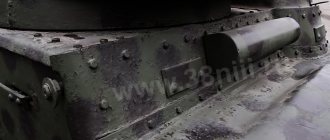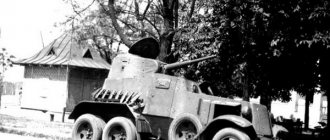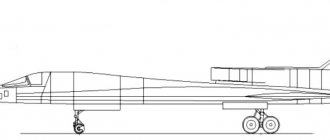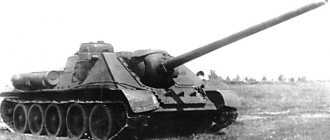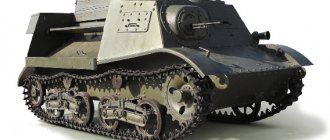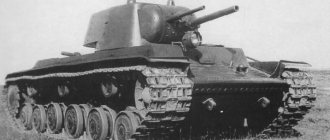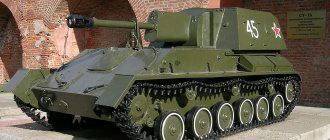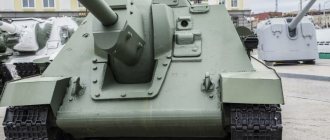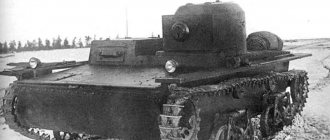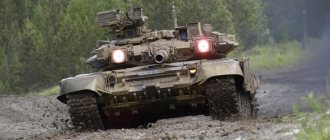Aircraft MBR-2 Dimensions. Engine. Weight. Story. Range of flight
Designer G.M. Beriev after moving to the Central Design Bureau of the plant named after. Menzhinsky began developing his project. With the participation of the Air Force Research Institute, he chose a naval short-range reconnaissance aircraft. Initially, he planned to make the aircraft all-metal, but representatives of the Naval Aviation Research Institute insisted on a wooden structure. Taking this wish into account, Beriev decided to make the car wooden, as simple as possible, designed for mass production. During the design, a large amount of research was carried out on various models in wind tunnels and the TsAGI experimental pool.
Mysterious "Sarmat"
Everything related to the development of this complex is shrouded in mystery. This is exactly the case when not all taxpayers will be able to find out in the near future where their paid funds are going. Only meager promises from the news media about successful launches and security overhead are proof that public money was not spent in vain
At present, too little is known about Sarmat. Apparently, this class of nuclear weapons carriers will play the role of the country’s main shield, together with air, sea and mobile based systems. Only some scattered data have been published about what the Sarmat missile is. The tactical and technical characteristics are also given only approximately: the range of action is 11 thousand kilometers, but at the same time it provides the opportunity to defeat the targets of a potential enemy through the Southern Policy.
Seaplane MBR-2 - video
Having completed the development of the project, Beriev presented it to the TsKB Technical Council, the project was approved and it was decided to build a prototype, designated TsKB-25. By the fall of 1931, the aircraft was built, but the M-27 engine, which was supposed to be installed on the aircraft, was not mass-produced. The plant director ordered to immediately stop all work, and the fate of the aircraft hung in the balance. We had to urgently look for a new engine and, by the decision of G.M. Beriev to install a licensed M-17 engine, albeit with less power. In the spring of 1932, the disassembled aircraft was delivered by rail to Sevastopol to the hydraulic base of plant No. 45. The first flight was scheduled for April 30, but it did not take place. The plane was launched onto the water on a rolling cart, but the cart did not want to move away from the bottom of the plane, even with the help of jerks from the boat. When the plane was pulled out of the water, it turned out that the bottom of the boat, covered with kuzbaslak, was stuck to the bed of the rolling cart, which they forgot to lubricate with grease. Only on May 3, on the second attempt, was it possible to get the plane into the air. Factory tests were carried out by test pilot B.L. Buchholz. The tests went quickly, without even various adjustments. The aircraft showed good flight performance, was stable in flight and on the water, and easy to fly.
The MBR-2 was recommended for production and adoption. At a meeting of representatives of the Air Force and aviation industry, A.N. unexpectedly spoke out against the launch of the series. Tupolev. Instead of “this piece of wood,” he offered his all-metal flying boat MBR-2. At the suggestion of the head of TsAGI N.M. Kharlamova G.M. Beriev was tasked with developing a passenger version of the MBR-2, the production of which would be much easier. But then in 1933 S.V. became the head of the Central Clinical Hospital. Ilyushin, and G.M. Beriev was appointed head of brigade No. 5 (naval aircraft). The issue of serial production of the MBR-2 was resolved, and plant No. 39 in Taganrog was also determined. After eliminating the shortcomings, the plant produced two series for military testing, and then large-scale production of the MBR-2 began, which was discontinued in the second half of 1940. Initially, vehicles were built with the M-17 engine, and then with the M-34 (a total of 1,365 vehicles were produced all modifications).
The MP-1 modification, developed for civil aviation, served for a long time in places where there were no airfields. Crew P.D. Osipenko set several world records in the class of seaplanes on this plane. The MBR-2 began to arrive in combat units in 1934. In 1937-1938. flying boats G.M. Beriev became the main seaplanes of naval aviation. MBR-2 took part in three wars: in August 1938 in the area of Lake Khasan, in 1940 during the Finnish War and in the Great Patriotic War. From the first days, these aircraft were involved in combat work and were used around the clock, mainly in land theaters of military operations. Heavy aircraft losses soon forced a shift to night bombing attacks. After the end of the war, the combat service of the aged MBR-2s ended. They were used a little more in the Civil Air Fleet.
Work, study and dreams of heaven
Already at the age of sixteen, the son of poor parents, Beriev, works as an apprentice foundry worker at a factory and at the same time studies at the Tiflis Railway Technical School. But dreams of the sky do not leave him and ultimately lead him to the Tiflis Polytechnic Institute, and then to the aviation department of the Leningrad Polytechnic Institute. After graduating from university in 1930, Beriev began work in the engineering and design profile.
It must be said that 1920–1930. - not the best time for hydroaviation. Despite the existence of a state plan, domestic production of seaplanes was hampered by the lack of suitable designs and difficulties with materials. As a temporary solution, seaplanes were purchased abroad. To develop Soviet hydroplanes, design bureaus in the field of hydroaviation were created in Moscow and Leningrad. However, by 1928, none of the models they created had ever entered production.
To rectify the situation, the French aircraft designer Paul Aimé Richard is invited. It is to the Richard OKB, called the Marine Experimental Aircraft Building of the All-Union Aviation Association (MOS VAO), that graduate Beriev is sent. Here he masters aircraft strength calculations, works on engine installations, and then is transferred as an assistant to the leading engineer to the pilot workshop. The OKB developed a project for the high seas torpedo bomber TOM-1. It was built in 1931, but also did not go into production, since it was not much different from previous float aircraft. Despite the failure, Beriev mastered a large amount of knowledge in practice and was responsible for the construction of a test base in Sevastopol.
Performance characteristics of MBR-2
— Chief designer: G. M. Beriev — First flight: May 3, 1932 — End of operation: 1946 — Units produced: 1,365, including passenger versions MP-1 and MP-1bis
MBR-2 crew
- 3 persons
MBR-2 engine
— PD x 1, M-34N — Power, hp: 830
Dimensions of MBR-2
— Wing span, m / wing area, m2: 18.8 / 54.4 — Aircraft length / aircraft height, m: 13.5 / 5.36
Weight of MBR-2
— Weight: maximum take-off / empty, kg: 4424 / 3306 — Full load, kg: 1117
Speed MBR-2
— Maximum speed at altitude / near the ground, km/h: 234 / 224
Service ceiling MBR-2
— 7400 m
MBR-2 flight range
— 1230 km
Armament MBR-2
— 2x7.62 mm ShKAS machine gun — bombs up to 600 kg
History of the creation of the Yars rocket
The RS-24 Yars intercontinental ballistic missile is, in fact, a deep modernization of the RT-2PM2 Topol-M missile system, the development of which began at the Moscow Institute of Thermal Engineering (MIT) in 1992 under the leadership of chief designer Solomatin. The development of a fifth-generation light solid-propellant rocket began in the USSR back in the late 80s and was entrusted to two largest missile centers at once: the Dnepropetrovsk Yuzhnoye Design Bureau and MIT. The result of the Muscovites’ work was the RT-2PM2 “Topol-M” missile with a monoblock warhead. There is information that at the same time, work was underway on a missile with a multiple independently targetable warhead (MIRV). In 2009, the restrictions of the SVN-1 treaty expired, and Russia received the right to create a new missile carrying several warheads. The RS-24 Yars differs from the Topol-M only in its head part and a more modern control system.
In May 2007, the first test launch of the new R-24 missile was carried out, the second took place in December of the same year. Both launches were carried out from the Plesetsk test site and both of them were successful. The launches were carried out from the modernized Topol-M complex, which once again proves the high degree of unification of these systems. The third launch of the rocket took place at the beginning of 2008 and was also successful. The parameters and characteristics of the new missile were strictly tied to the technical characteristics of the Topol-M complex; there are no differences between the launch systems of these missiles. This should significantly reduce the cost of production. Some experts note the similarity of some characteristics of the R-24 Yars and the R-30 Bulava missile system.
The small number of test launches before the missile was handed over to the troops (compared to Soviet times) was also surprising. However, the developers of the complex stated that the new missiles are being tested according to a new program, with more active use of computer modeling, and this makes it possible to reduce the number of physical missile launches to a minimum. This approach is economically beneficial.
Initially, it was planned to deploy new missile systems in 2010. However, the supply of RS-24 to the Strategic Missile Forces began back in 2009. In 2010, the 54th Guards Missile Division (Ivanovo Region) received three new missile systems, Deputy Defense Minister Popovkin announced. At the end of the year, another RS-24 division (three complexes) entered service with the same division. In March 2011, it was officially announced that the RS-24 ICBM was on combat duty. In 2012, the re-equipment of the Kozelsk and Novosibirsk missile units with a new missile system began. At the beginning of 2014, the Russian special purpose missile forces were armed with 33 RS-24 missiles, each of them had four warheads.
The RS-2 ballistic missile is manufactured at the Votkinsk Machine-Building Plant, and the launcher for the mobile complex is mass-produced at the Volgograd Production Association "Barricades".
New "Satan"
By the end of the second decade of the 21st century, the Sarmat ballistic missile will replace the Voevoda - Satan, which performs the task of the guarantor of retaliation. At one time, the number of RS-20Vs exceeded 3 hundred; now there are 52 of them. All of them have 10 warheads installed, for a total of 520 warheads (750 kilotons of TNT equivalent) - this is almost a third of the entire sea and ground strategic defense potential.
The weight of “Voevoda” is more than 200 tons. The nuclear potential of the Russian Federation is being updated; in 2015, the Strategic Missile Forces will receive 500 new sets of other types, but they will have to perform other tasks. As a rule, these are mobile units that are on duty in operational areas.
“Satan” is scary because of its 2 important capabilities: enormous destructive power and the ability to quickly pass missile defense lines. Each such carrier can turn an entire metropolis with its surroundings and industrial area into a jet desert. It is assumed that the Sarmat missile will replace the world's most powerful carrier around the time it reaches 30 years of age, which is very honorable for an ICBM.
Tests
The production of a new technical sample always involves a serious risk, but if successful, it is completely justified.
Work on this project began in 2009. Design Bureau, after 2 years of research, has finally started testing.
In the early fall of 2011, the vicinity of the Kapustin YaR cosmodrome was damaged by a powerful explosion. The Sarmat rocket, on which serious hopes were pinned, crashed to the ground a few minutes after launch. All further launches, unfortunately, also turned out to be unsuccessful.
Only a year later there was a successful launch. This time, experts took into account basic ballistics indicators. Tests have shown that the Sarmat liquid-propellant rocket is capable of covering more than 11,000 km, while carrying a fighting compartment weighing 4,350 kg. In the spring of 2014, Yu. Borisov (Deputy Minister of Defense) announced that all work on the development of a new strategic complex was proceeding smoothly, according to a clearly planned schedule. He believes that the new Sarmat missile will have no restrictions in terms of combat use and will be able to hit targets along trajectories that pass through both poles of the planets
This is extremely important because NATO rugged systems are not designed for this kind of versatility.
Unpredictability
All the advantages of the unique personal control of the warheads of the separable warhead are rendered useless if the enemy can destroy the ICBM before it enters the combat course. The Sarmat rocket flies quickly, however, its trajectory at any moment can leave the usual predictable arc - a parabola. Additional maneuvering engines change direction, altitude, speed, and then the onboard computer determines new flight parameters to reach the target. Such unpredictability is also inherent in other types of modern domestic nuclear charge carriers. As a result, it became their “calling card” or an asymmetric response to the attempts of a potential enemy to ensure their own invulnerability, which would allow them to strike the first blow.
